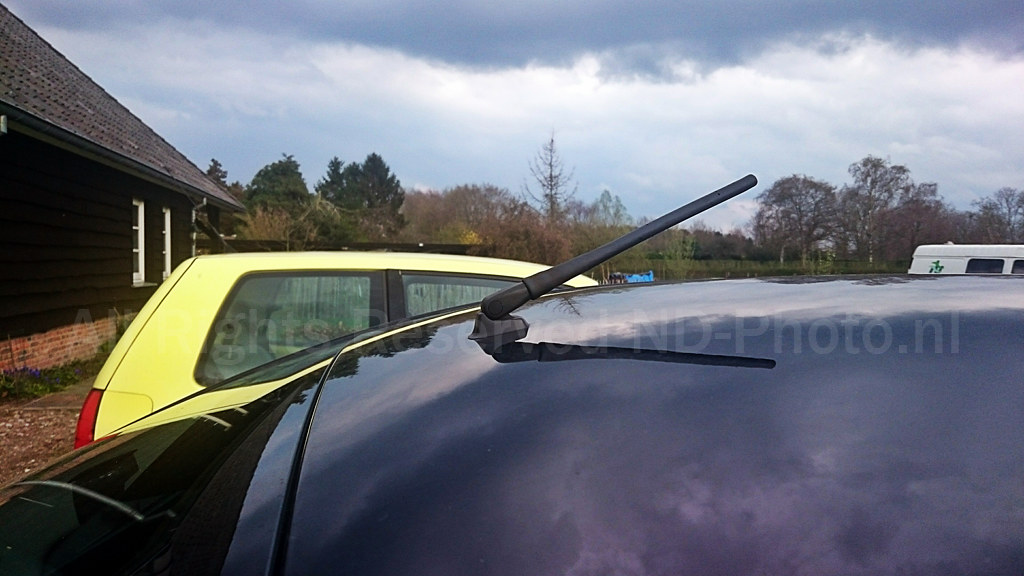How to Improve Signal Quality with a TV Antenna for Car

As our lives become increasingly mobile, the demand for in-car entertainment has grown exponentially. Watching TV on the go is now more accessible than ever, thanks to advances in technology and the availability of specialized TV antennas for car. However, achieving optimal signal quality can be challenging due to the constant movement and varying environmental conditions. This article will guide you through practical steps to improve the signal quality of your car’s TV antenna, ensuring a smooth and enjoyable viewing experience.
Understanding the Basics of TV Antennas for Cars
What is a Car TV Antenna?
A car TV antenna is a device designed to receive television signals while you’re on the move. Unlike home TV antennas, these are compact, robust, and engineered to withstand the vibrations and environmental factors associated with driving. They can be mounted on the roof, windshield, or inside the vehicle.
Types of Car TV Antennas
- Roof-Mounted Antennas: These are typically the most effective because they have a clear line of sight to the signal source. However, they are also more exposed to the elements.
- Window-Mounted Antennas: These are easier to install and less exposed but may not provide as strong a signal due to potential obstructions.
- Internal Antennas: These are installed inside the vehicle, often in the dashboard or rear window. They are the least obtrusive but may struggle with signal strength in some areas.
Factors Affecting Signal Quality
Geographical Location
Your location plays a crucial role in signal reception. Urban areas with many tall buildings can cause signal reflection and interference, while rural areas might have weak signals due to distance from broadcast towers.
Weather Conditions
Weather can significantly impact signal quality. Rain, snow, and even heavy cloud cover can degrade the signal. It’s essential to consider these factors when trying to improve your signal quality.
Vehicle Speed and Movement
Constant movement and varying speeds can disrupt signal reception. High speeds may cause more frequent signal loss compared to slower, steady driving.
Interference from Other Electronic Devices
Electronic devices within your vehicle, such as mobile phones, GPS systems, and other wireless devices, can interfere with the TV signal. It’s crucial to manage and minimize this interference for better reception.
Tips to Improve Signal Quality
Choose the Right Antenna
Selecting the appropriate antenna for your needs is the first step. If you frequently drive in urban areas, a roof-mounted antenna might be best. For rural areas, a high-gain antenna designed for longer distances would be more suitable.
Proper Installation
- Optimal Placement: Install the antenna where it has the least obstruction. For roof-mounted antennas, place them centrally to avoid interference from the car’s body. Window-mounted antennas should be positioned as high as possible.
- Secure Installation: Ensure the antenna is securely attached to prevent vibrations and movement that can affect signal quality. Use strong adhesives or mounting brackets as needed.
Use a Signal Booster
A signal booster, or amplifier, can enhance the strength of the received signal. These devices are particularly useful in areas with weak signals. Ensure the booster is compatible with your antenna and installed correctly to avoid over-amplification, which can also cause issues.
Regular Maintenance
Keep the antenna and its components clean and in good condition. Dust, dirt, and debris can accumulate and affect performance. Periodically check for any damage and replace parts as needed.
Minimize Electronic Interference
- Turn Off Unnecessary Devices: When watching TV, turn off or move away from other electronic devices that could cause interference.
- Use Shielded Cables: Shielded coaxial cables can help reduce interference from other electronic devices in the vehicle. Ensure all connections are secure and free from corrosion.
Adjust Antenna Position
Sometimes, small adjustments to the antenna’s position can make a significant difference. Experiment with different angles and positions to find the best reception. This may vary depending on your current location and surrounding environment.
Update Firmware and Software
Ensure your TV receiver’s firmware and any related software are up-to-date. Manufacturers often release updates to improve performance and fix bugs that might affect signal reception.
Advanced Solutions for Persistent Issues
Install a Diversity Antenna System
A diversity antenna system uses multiple antennas to improve signal reception. These systems automatically switch between antennas to choose the one with the best signal. While more expensive, they can significantly enhance performance, especially in challenging environments.
Use a Digital TV Receiver
Digital TV receivers are more efficient at handling weak signals compared to analog receivers. If your system is outdated, upgrading to a digital receiver can improve signal quality.
Incorporate a High-Gain Antenna
High-gain antennas are designed to focus reception in a specific direction, making them ideal for rural areas where broadcast towers are far away. These antennas can significantly improve signal strength but require precise aiming.
Troubleshooting Common Problems
No Signal or Weak Signal
- Check Connections: Ensure all cables and connections are secure and free from damage.
- Re-scan for Channels: Sometimes, re-scanning for available channels can help the TV receiver lock onto a better signal.
- Move to a Different Location: If possible, move the vehicle to a different location to see if the signal improves.
Intermittent Signal Loss
- Inspect for Interference: Check for any devices causing interference and turn them off.
- Check for Physical Obstructions: Look for and remove any physical obstructions that might be blocking the signal.
Poor Picture Quality
- Adjust Antenna Position: Make small adjustments to the antenna’s position to find the best signal.
- Use a Signal Booster: If not already in use, install a signal booster to enhance signal strength.
Conclusion
Improving the signal quality of a TV antenna for a car requires a combination of the right equipment, proper installation, and regular maintenance. Understanding the factors that affect signal reception, such as geographical location, weather conditions, and electronic interference, is crucial. By choosing the right antenna, using a signal booster, and minimizing interference, you can significantly enhance your in-car TV viewing experience. For those facing persistent issues, advanced solutions like diversity antenna systems and high-gain antennas are worth considering. With these tips, you can enjoy clear, uninterrupted TV signals on the go, making every journey more enjoyable.








